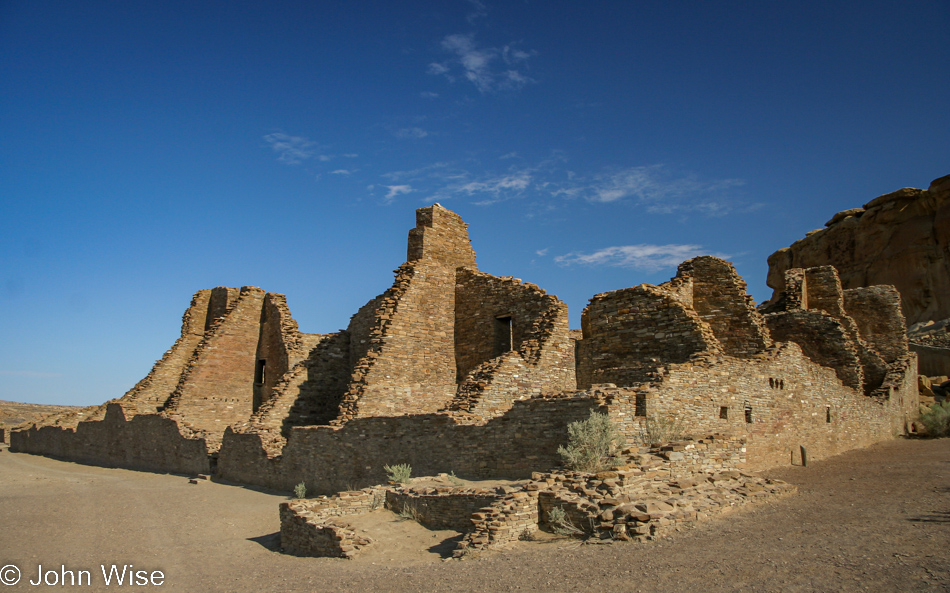
On the way to Taos, New Mexico, we made an unscheduled stop at Chaco Culture National Historic Park. This was our fourth time visiting this World Heritage Site. Those first few words are part of the original post I shared back in July 2006, along with one photo, the overhead view of Pueblo Bonito a few photos below this. This acknowledgment is part of an update in January 2023 aiming to share more of the details and more images from our epic 4th of July trek to Texas. As was the case with the previous day, this post was originally fewer than 200 words long, and there are no notes to refer back to that might illuminate what was in our minds over the course of the seven days of this particular vacation. No matter, my goal is to add some kind of context that should Caroline or I read this ten years hence, we’ll be entertained that this writing captured something that rings true with what might have been.
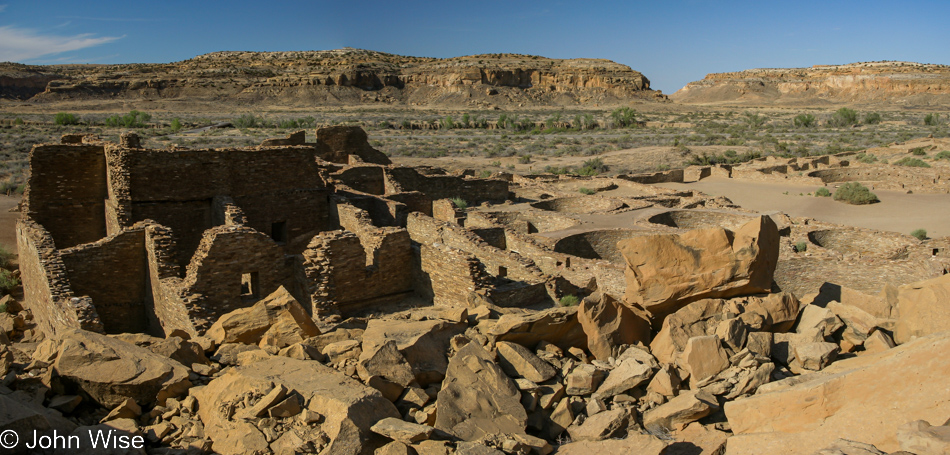
This wouldn’t be the last time we visit Chaco, and though we’ve been here a number of times, we continue returning, looking for something that remains elusive. I equate this search with the same thing I’m looking for in cathedrals, castles, and other historic sites: the echoes of those who preceded us. Some might think I’m looking for ghosts, but that would be silly as I do not believe in phantasms. I do think that humans have a powerful recollection that is able to project into our consciousness what might have filled the space at one time based on things we’ve seen in the past. For example, if you were chased as a child by a dog at a particular corner in the neighborhood you grew up in, you might look for the sign of a dog a decade later when making a visit to that childhood home. In that sense, you have the image of the ghost of that dog in your mind’s eye. I’m looking for those indigenous people I’ve seen elsewhere to be transported here because I wish it to be so. I have no real expectation of experiencing such a thin, but it is that unfulfilled dream scenario that brings me back to finally discovering what I failed to see previously.
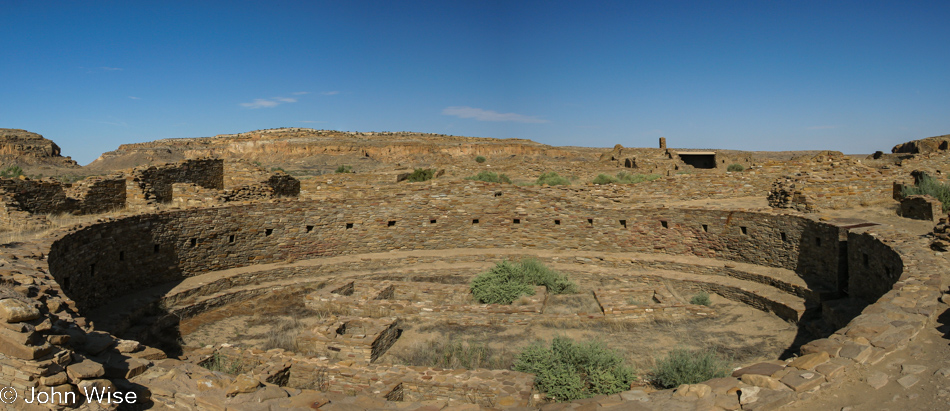
Literally, hundreds of people could have occupied this kiva 1,000 years ago, while today, we visitors can only try to imagine the sights, sounds, smells, and nature of the ceremonies, storytelling, or celebration that would have occurred here under a massive roof that once covered the kiva. For me, this is the grand cathedral of the ancestral people that helped shape the culture of the southwest.
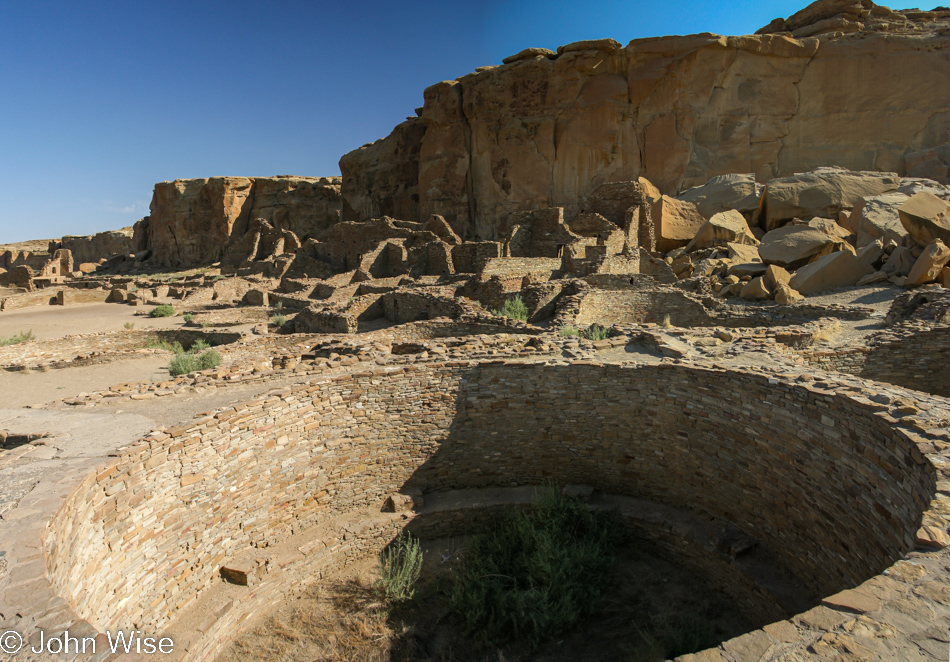
We are fortunate that even this much still exists of the history of these people, and while many artifacts have been preserved, there is a secret life that, though it may echo across time, remains secret and mostly hidden to those of us who’d love to peel back its veil of mystery.
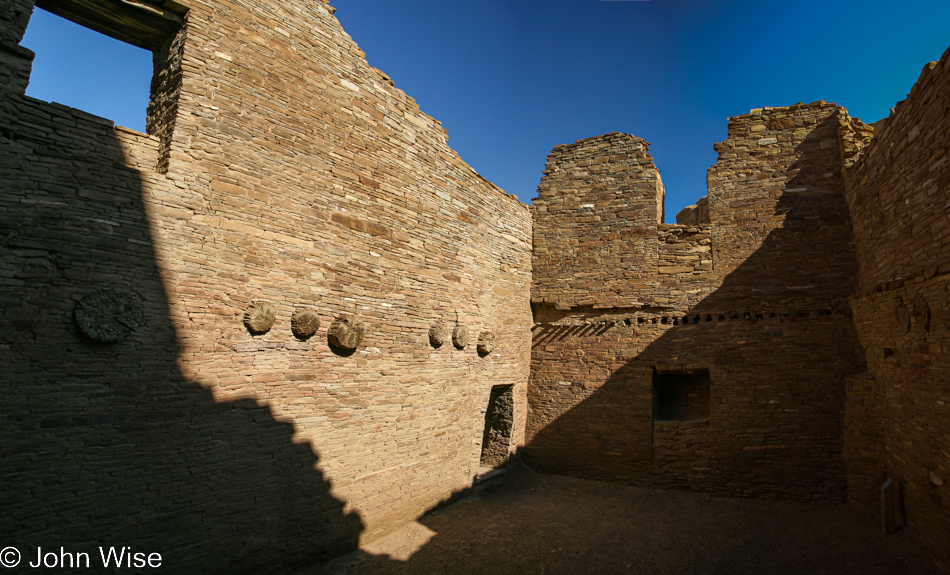
Toddlers maneuvered through these rooms, teens slept here, adults realized lives, and elders shared wisdom with the group that allowed them to exist in an environment that was likely just as remote and severe as it is to us who visit today. What I imagine they did have was a routine that reassured them that this life was the best life and that their version of normal was the glue that held the fabric of their society together.
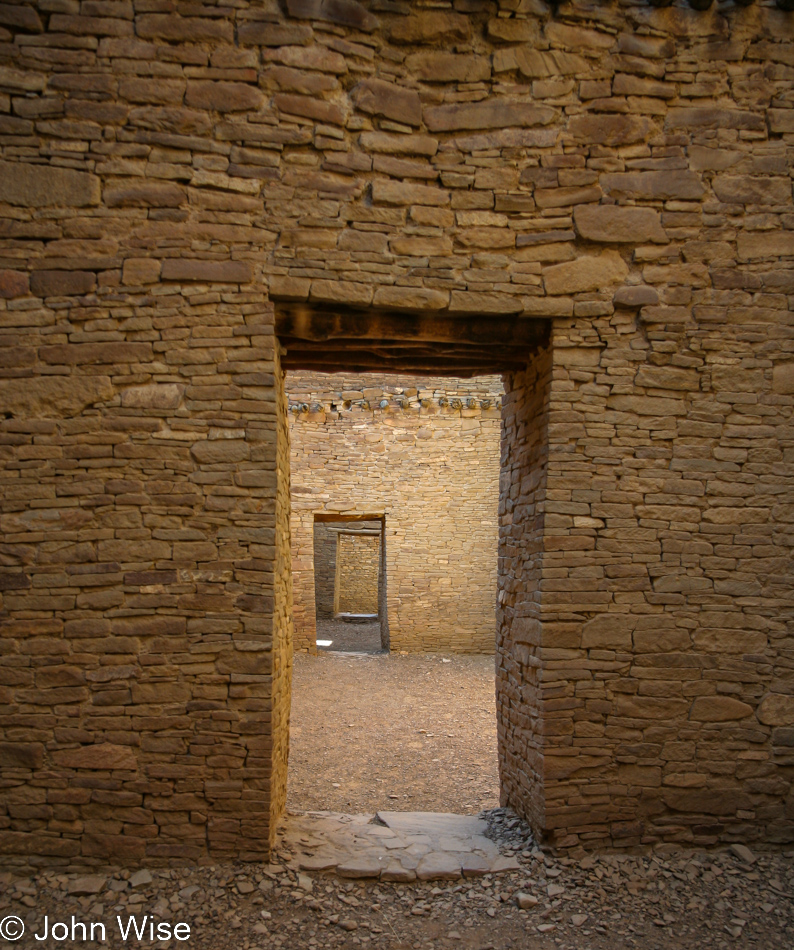
We may look through the windows and doors of Chaco, but there is nobody on the other side. Everyone is gone, and there are no markers or diagrams to offer us an understanding of anything more than what we might choose to imagine. The hands that toiled to build a dream have fallen silent long gone, and as much as I desire, I cannot pull their sounds from the ether. As in the cathedral, where on occasion I can smell the frankincense or myrrh, I yearn to smell anything that might linger here all of these hundreds of years after the inhabitants left and, as I might also experience in a church, as the choir finishes a hymn and I listen to the reverberations of those voices moving through the cavernous space, I long to hear a native voice, drum, or flute that has remained lost in a corner here over the centuries.
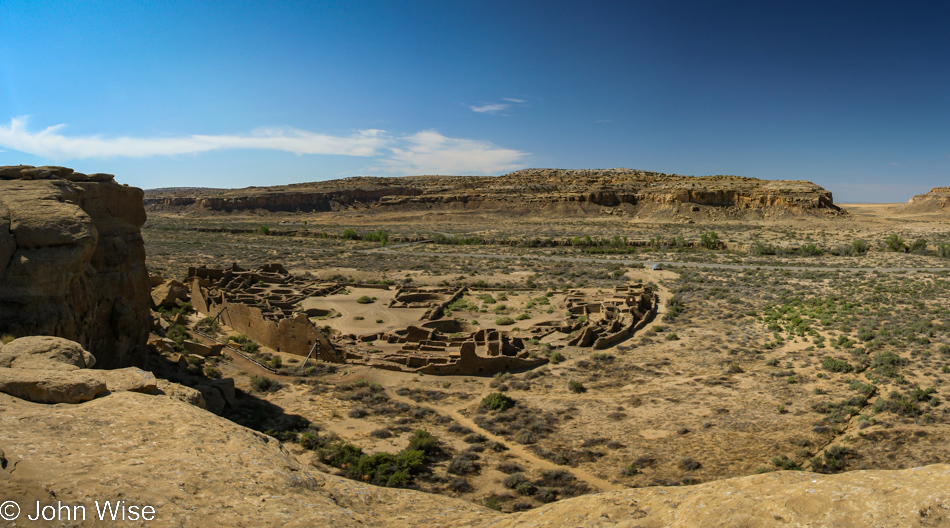
With a cool morning but a blazing sun, we opted to take a hike up the sandstone face near Kin Kletso. A somewhat steep 350-foot (106 meters) scramble up rocks and boulders leading to a narrow crack slicing upwards to the top of the cliff, the Pueblo Alto Trail offers a spectacular view of Pueblo Bonito, featured here as today’s photo of the day.
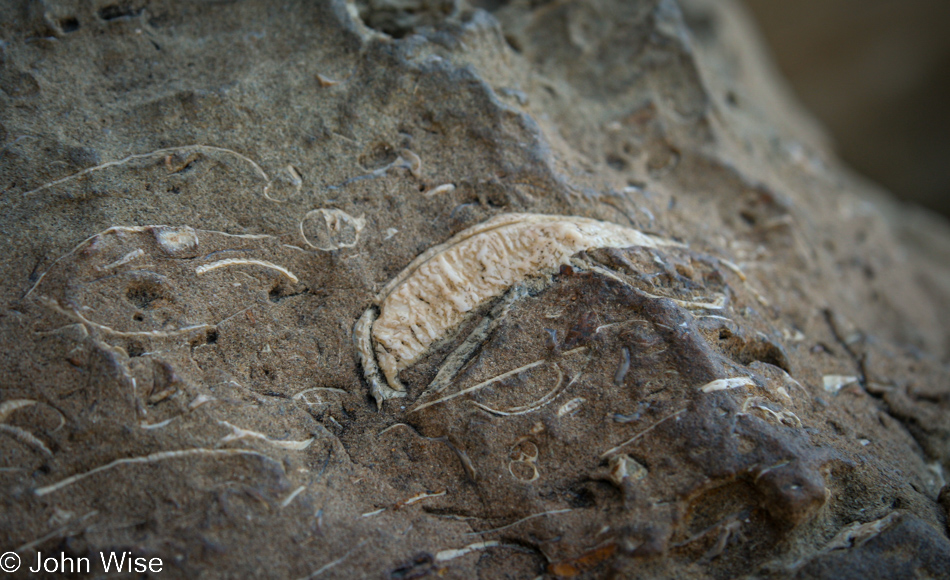
I now wonder, how could I have left out these ancient sea fossils we found atop the cliffside? Was my curiosity as strong about them and their lives in the millions of years before the indigenous humans arrived, or was I blinded by my desire to better understand the Puebloan inhabitants?

What’s encoded here? I’m going to put forth that this is a packing list and directions for those going on a journey to Mexico to trade chocolate with the people who lived well south of here. Sure, it might mean something altogether different but who cares at the moment one is taking in what one cannot understand?
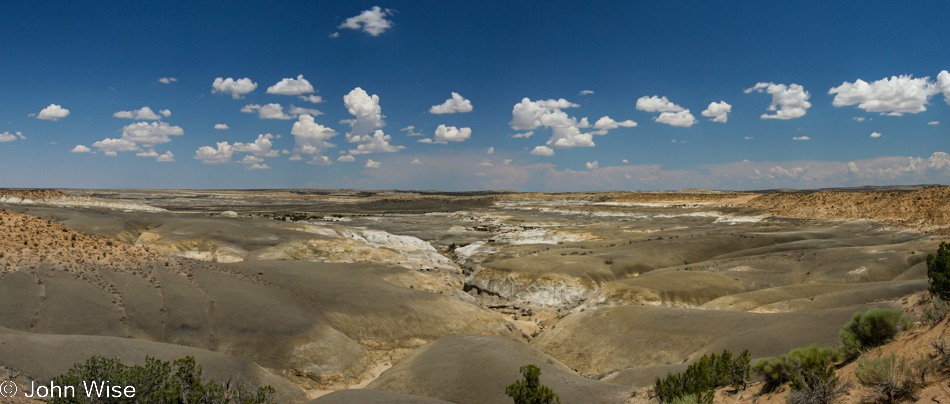
From the top of the cliffside, looking in the opposite direction of Pueblo Bonito, the view leads into badlands with nothing on the horizon aside from an infinity of space that might go on for eternity.

Now thoroughly sunburned and almost four hours behind schedule, we leave the park, bouncing over 20 miles of rough washboard dirt road to reach a modern ruin, a relic of a gas station in Regina, New Mexico. Good thing we didn’t need what they weren’t selling.
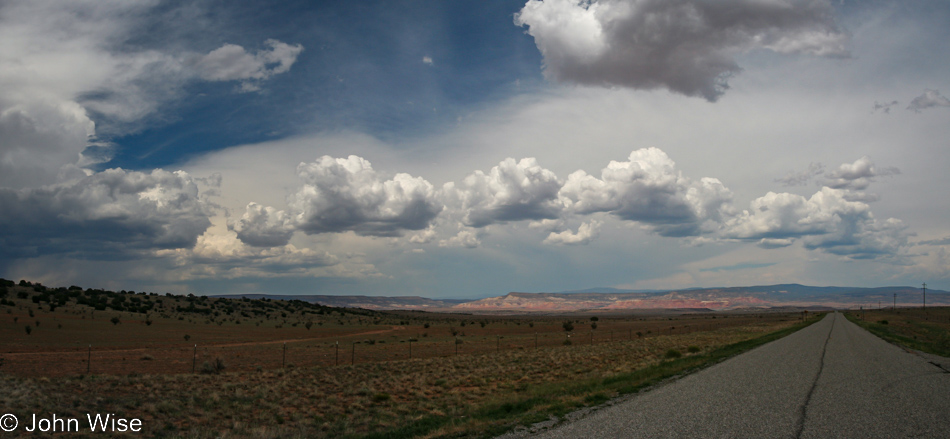
And with the convenience of gasoline in an air-conditioned car, we close the infinity of space in mere minutes, able to travel roads paved for our convenience with nary a thought of ever getting truly lost. As a matter of fact, just how difficult is it these days to be lost, excluding those locked in mental illness? We just keep going, and ultimately, we’ll get where we need to be.
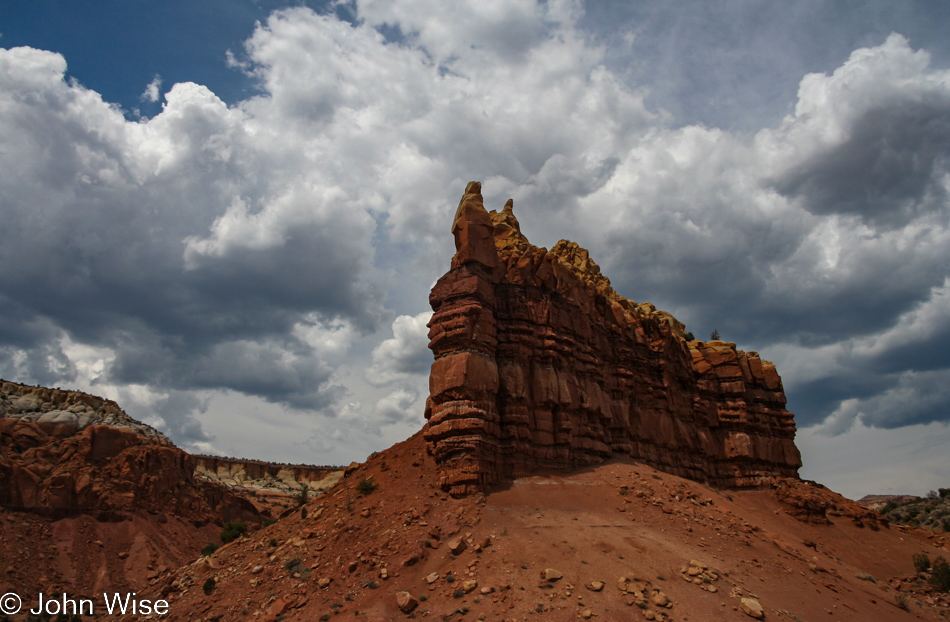
Excuse me while I go out on a limb, but I just wrote about a magmatic dike seen at Shiprock yesterday. I’m guessing this here was a sedimentary dike, also called a clastic dike, where sediments filled a space between other rocks, and then those rocks eroded, leaving this column of red rock.

Like an Eye of Horus or maybe more like the eye of the hawk, this cloud over Antonito, Colorado, is open to interpretation, but when we see symbols and reminders of the life around us, how might these appearances have influenced people to see the spirit of all things in the world around them?
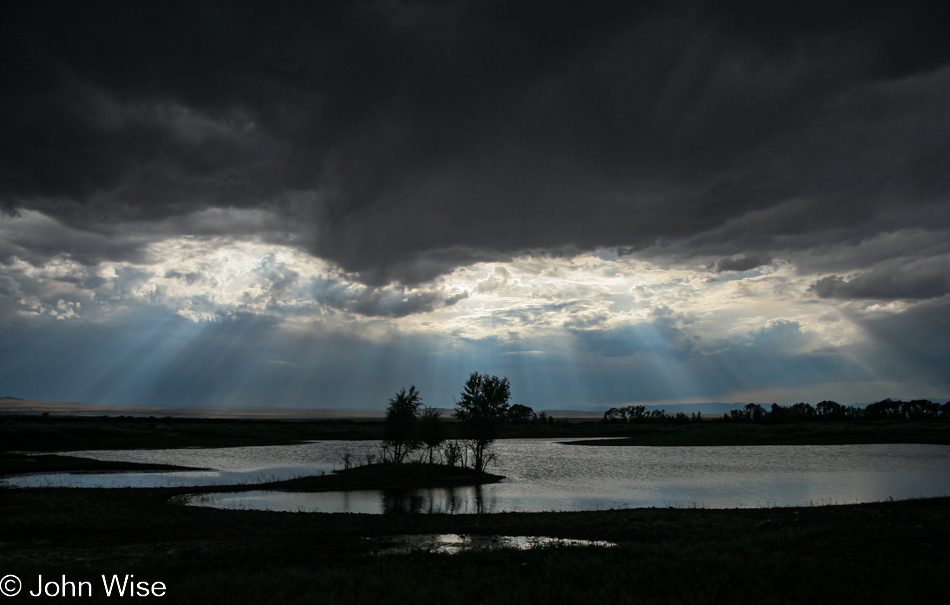
We’ve already passed through Cuba, Coyote, Cebolla, Brazos, and Chama today, and while they obviously leave impressions, the images shared from this day ended up being more important to my memories than the recording of those places that have names.
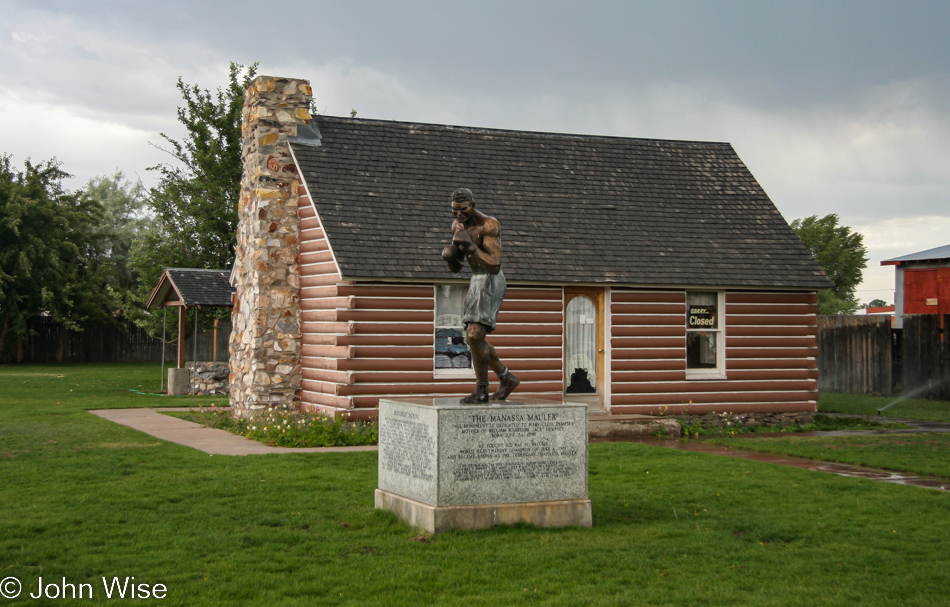
Only to contradict me in the next paragraph, we stopped here in Manassa, Colorado, to show my age. We are standing outside the birthplace of famous boxing champ Jack Dempsey. Oh, wait, Dempsey fought from 1914 to 1927, and I was just confusing my knowledge of the past with showing my age, but in a sense, I am showing my age as it would seem to me that the current generation has quite a limited knowledge of cultural history beyond about the 1980s.
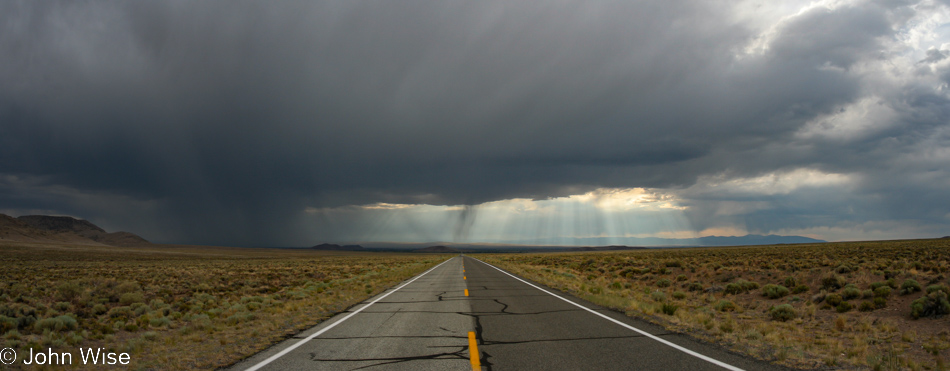
I point out a lot of things I’m in love with, but have I ever shared my appreciation for heavy clouds in the distance where some small corner of the looming giant bursts and a column of rain blots out the light from behind it, leaving no ambiguity that a torrent of water is falling from the sky over there? And then, if that wasn’t enough, we are treated with a curtain of crepuscular rays peaking out from the heavens above.
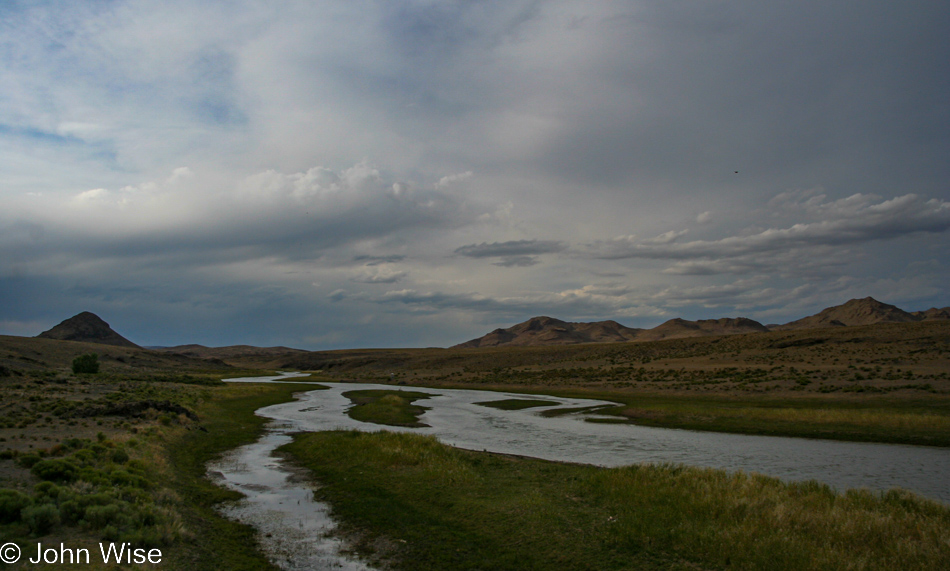
I look at this photo with what might be considered a sense of dread. As a modern human, I cannot know what it is to look at a horizon and have the understanding that there is just much more of the same ahead. How long would I have needed to walk 35,000 years ago to reach an end, a sea, or an impassable chasm? In another age, how much time might I have been able to afford a long walk under the sky with no sense of purpose or responsibility other than to myself to find food and water along the way and fend off animals that might want to eat me?

I’d imagine that the family that stopped here along their path in life had something similar in mind about going out for a walk in the middle of nowhere when they found this isolated corner; they felt it worthwhile to drag what they’d need out here to make a living and build a house. Things must have been tough out here as even to this day, only a few people seem to have figured out how to survive. Even the tenacity of indigenous people must have understood that you do not build permanent camps out here, only use this land during the seasons compatible with nomadism.
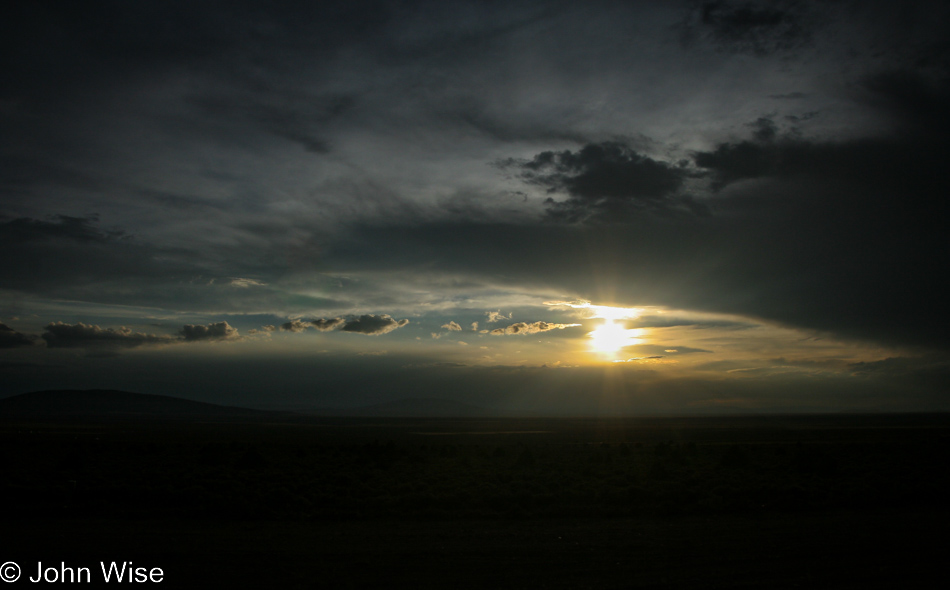
Now, as it grows late in the day, we need to stop this daydreaming and go connect with where we’ll take refuge for the night. Our destination is down in Taos, New Mexico, where we already have a reservation at the Indian Hills Inn near Taos Plaza for only $78, while dinner was at Antonio’s – The Taste of Mexico.